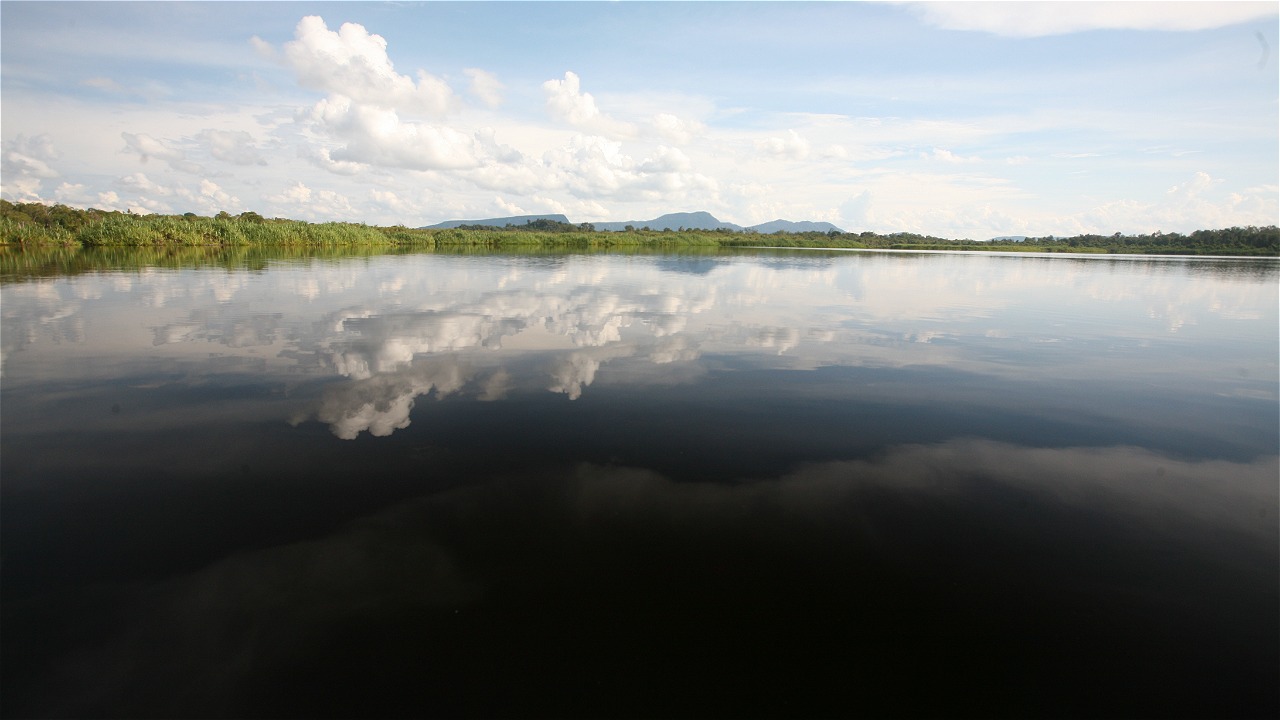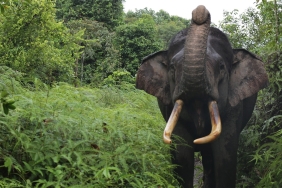MELEMBA IN THE RADAR SHOT OF ENVIRONMENTAL SERVICES
Who doesn't know Melemba? This buffer village of Lake Sentarum National Park is like a beautiful girl in the making. Its biodiversity is enough to make the world set its sights on one of the remote areas in Kapuas Hulu Regency, West Kalimantan.
This village of 335 people is like a thick book, where each page offers a variety of meanings. The area is dominated by water, hinting at a river civilization. Melemba is drained by a large river called Leboyan.
This river is also the lifeblood and cultural identity for Melemba villagers. Apart from being an important ecosystem in the corridor of Betung Kerihun National Park and Danau Sentarum National Park, Leboyan has a hydrological function and is a habitat for various types of aquatic flora and fauna. Administratively, the village has an area of 26,186 hectares. Most or 50 percent of the area is used for rubber plantations. While in the agricultural sector (fields) 15 percent, and settlements as much as 15 percent.
The village also has a water area of 45 percent. The largest lake is called Telatap and is located in Pelaik Hamlet. However, the characteristics of this lake are temporary. The lake with permanent characteristics and the largest is called Lukuk Lake. This 60.26 hectare lake is located in Meliau Hamlet.
Through various local initiatives, Melemba Village was finally confirmed as an environmental and ecotourism village. The reason is simple, this village has products that can or cannot be measured directly in the form of nature / recreation tourism services, protection of hydrological systems, soil fertility, erosion and flood control, beauty, uniqueness and comfort.
Environmental Services
Referring to the data above, Melemba Village is like a hidden paradise. Behind the existing biodiversity, there is the beauty of lakes, hills, animals, thick culture, and various types of freshwater fish. The embedded natural wealth is a strong magnetic force for many parties to touch it.
WWF-Indonesia West Kalimantan Program is no exception, which tries to foster the birth of local community-based ecotourism programs. Eight years of working with Melemba residents, the face of the village, which now has a population of 335 people, is increasingly radiant.
The story begins in 2008. At that time, there was a desire to explore the potential in Melemba Village, precisely in Meliau Hamlet. The most viable option was a community empowerment program through photography in collaboration with WWF-Indonesia and Photovoices International.
This program also succeeded in revealing the potential of natural resources in the village through photography. One of the animals identified was the orangutan.
Seeing the magnitude of the existing natural potential, WWF-Indonesia West Kalimantan Program poured a number of community assistance programs. Among other things, helping to design the making of village regulations (Perdes) ecotourism, various training in ecotourism management, the formation of tourism management groups, and training in monitoring the rate of decay of orangutan nests.
Melemba is one of the important locations for orangutan conservation efforts in the TNBK-TNDS corridor where out of a total population of 2,500 orangutans in Kapuas Hulu, 581 orangutans live in the corridor and mainly around the forest in Melemba Village.
In addition, there is also a program to build an animal observation center in Bukit Peninjau, Meliau Hamlet, community empowerment through critical land restoration programs, monitoring orangutan nests, and increasing the capacity of human resources through a series of training and comparative studies to certain areas.
The long road that accompanies this series of program interventions in the heart of Borneo has positive implications for local communities living in Melemba Village, especially Meliau Hamlet. Efforts to protect orangutans and improve their habitat have become the initial capital to improve social systems and order.
One of the most obvious positive impacts that can be felt directly by the community is the availability of basic infrastructure such as clean water to residents' homes and lighting through solar technology. This is the fruit or environmental reward of the efforts that have been carried out by residents through WWF assistance over a period of eight years.
Another impact is the increase in the number of tourist visits to Kapuas Hulu Regency. The Kapuas Hulu Culture and Tourism Office noted that the number of visits in 2012 reached 2,552 people.
This figure increased quite sharply in 2014 with the number of visits reaching 3,631. Then in 2015 the number of tourist visits increased to 4,623.
Of the total number of tourists, Melemba Village is the main contributor to the increase in the number of tourist visits in the conservation district. The increase in the number of tourist visits to Melemba Village certainly has implications for increasing the economic coffers of the local community.
Like a dipper, the program that has been running also received a positive response from the government. This is indicated by the many programs disbursed by the central and regional governments through various fields. Among other things, the construction of bridge infrastructure, lanting houses, making homestays, building pavilions and public toilets, as well as various trainings that are running until now.





